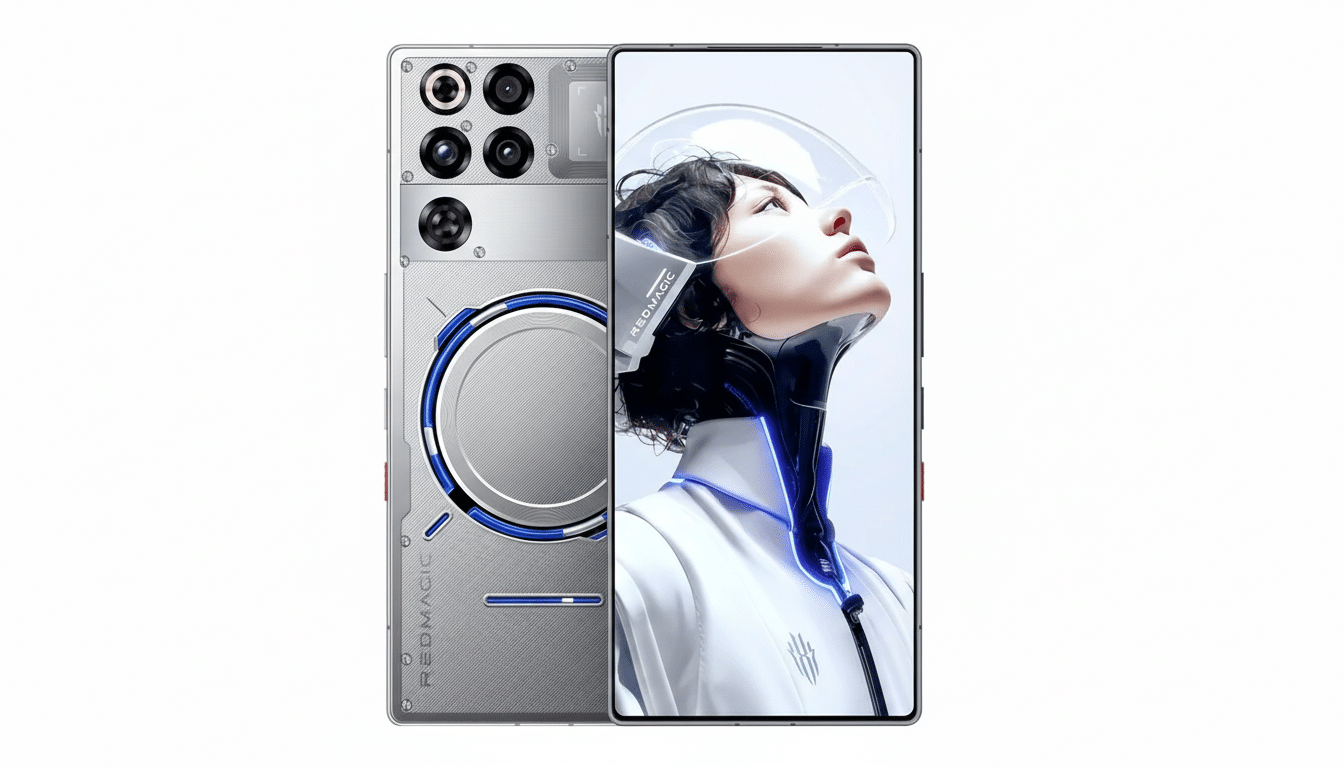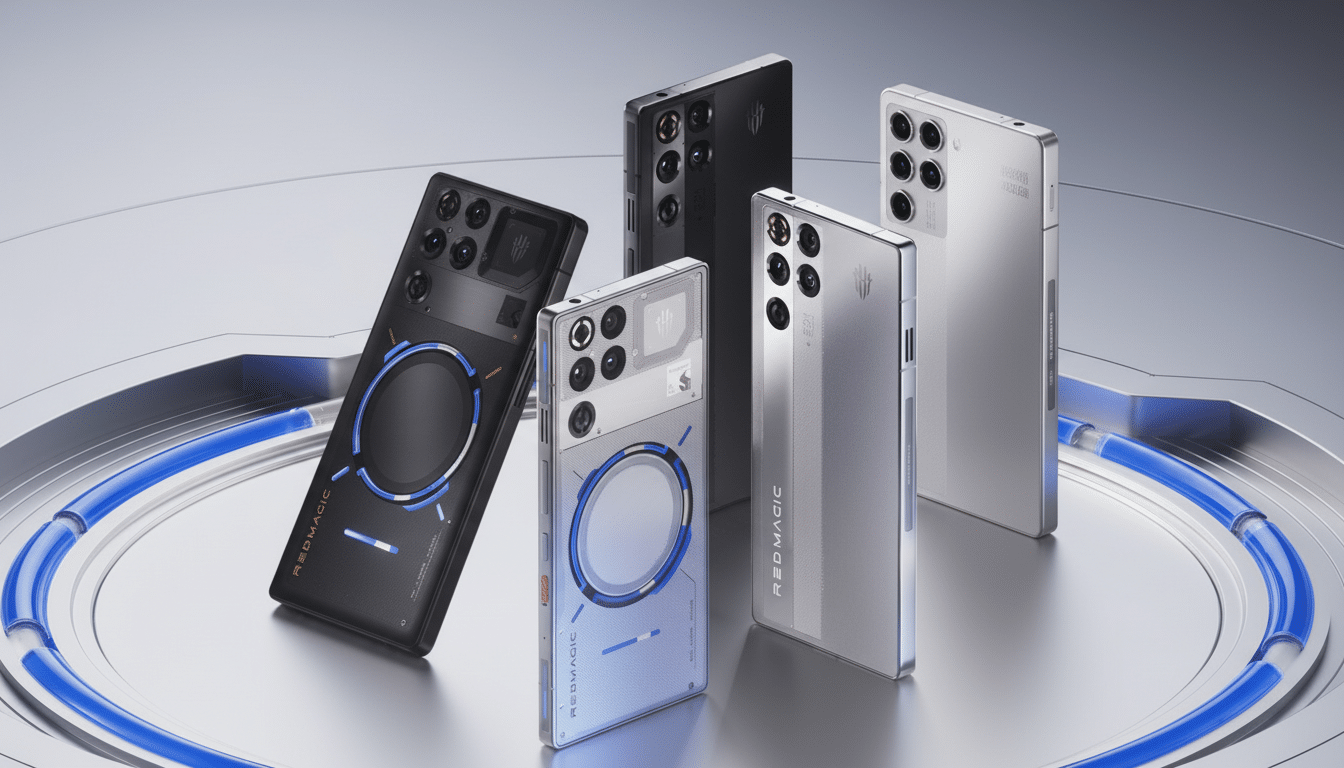My very first time using a production Snapdragon 8 Elite Gen 5 device revealed a blisteringly fast flagship chip—a real improvement over last year—and still falling just short of the early hype. Running in the Nubia RedMagic 11 Pro, silicon records big wins in both CPU and GPU throughputs, but on the final scores it trails Qualcomm’s reference platform by somewhere between 3% and 8%, with sustained performance being heavily determined by how good Nubia’s gaming phone cooling is.
Why one of the early tests matters right now
Reference devices are configured to show off the top end of a chipset. Retail telephones come with thermal limits, firmware choices and power policies that show how the silicon behaves in pockets and hands. And the RedMagic 11 Pro, which has a 144Hz panel, as much as 24GB of RAM and an active cooler, is the perfect (if very hypothetical) first peek at Snapdragon 8 Elite Gen 5 actually living in the best consumer chassis it can. Ironically, in my runs removing its gaming mode meant more efficiency; turning it off resulted in higher peak scores for me, whereas with the other two manufacturers that was down instead to unparking all three levels of CPU and making sure I wasn’t running on battery power.

How CPU benchmarks connect to Oryon performance
Qualcomm’s Oryon custom CPU cores are still the star of the show. In Geekbench 6, the RedMagic 11 Pro demonstrates a 15% boost in single-core and a 14% improvement in multi-core versus last year’s RedMagic 10 Pro using the previous-gen Snapdragon 8 Elite—respectable generational progress, though not quite what Qualcomm has promised with its “20%” marketing pitch. Those gains see Qualcomm ahead of Arm-based rivals for all but the most heavily-threaded workloads while still keeping performance responsive.
Against like opponents, the picture is mixed. Against the Dimensity 9500 handset and its Arm C1-Ultra CPU (in a vivo flagship), the Snapdragon was roughly 7.5% faster in single-core and 14.7% ahead in multi-core workloads. Apple’s A-series is still eking out a single-core victory — about a 5 percent win to my logs — but Snapdragon 8 Elite Gen 5 counterpunches with a 16 percent victory in multi-core, the metric that feeds heavy multitasking, on-device AI pipelines and complex productivity apps.
These results hold true with wider observations from Primate Labs’ performance approach: Apple generally optimizes for peak single-core latency, while the latest Qualcomm chip prioritizes sustained parallel throughput. For everyday stuff that usually means faster exports, smoother app installs and faster AI inferencing on the Snapdragon device.
GPU gains and the gaming reality on this flagship
There’s meaningful, if gradual, progress carved out by the new Adreno GPU. In 3DMark Wild Life Extreme, I witnessed a 13.5 percent increase over last year’s 8 Elite; Solar Bay’s ray-tracing benchmark saw a 17 percent improvement—again line-ball (as they say in Australia) with Qualcomm briefings yet not the 23 percent uplift quoted in marketing materials. Nonetheless, the chip easily outpaces most Android competitors, and when I tested it, it bested Apple’s new GPU by between 19% and 38% depending on the workload.
The G1-Ultra GPU from MediaTek housed within the Dimensity 9500 closes that gap. It was behind by around 12% in Wild Life Extreme but managed to keep pace or slightly beat the Snapdragon by ~1% in the ray-tracing Solar Bay test. That split indicates two things: Qualcomm continues to have an edge in traditional rasterized pipelines, whereas real-time ray tracing is now a coin flip that could potentially be decided by driver maturity and game-side optimizations.
During real-world gameplay, the RedMagic’s 144Hz screen and fan-assisted cooling allow the Snapdragon to maintain high frame rates in graphically intensive titles. But the takeaway isn’t just about peak FPS; it’s more broadly about steadiness. For today’s competitive shooters and open-world RPGs, frame pacing and slightly fewer frequency dips are more important than raw bursts.

Thermal stability and cooling notes from stress tests
Stress tests are where the rubber meets reality. Under the onerous 20-run loop and extended CPU loads of 3DMark, the RedMagic 11 Pro managed about 80% stability—much better than last year and perhaps my best result ever for one of these mainstream flagship write-ups. Reported peak surface-adjacent temps were around 56.0°C versus the previous model’s 57.0°C, so a bit cooler, though hot enough to remind you this is hardcore silicon running at the bleeding edge.
Two giant asterisks: the phone’s advanced cooling obviously props up the numbers, and that gap in performance to last year’s model certainly narrows as minutes slide by.
In other words, the headline gains are biggest for short bursts. Across longer, sustained testing, you’re rewarded less with higher ceilings and more with flatter curves—this seems a good trade-off for actual gaming but potentially peaks the “wow” scores on synthetic benchmarks from non-gaming phones.
What it means for upgraders and rivals in 2025
This retail phone landed 3% to 8% below Qualcomm’s own reference device, in my suite. It’s a delta that’s normal—OEMs tune for acoustics, efficiency, and battery life—but it also results in a year-on-year lead for Qualcomm that’s incremental rather than meteoric. If you already have an 8 Elite phone, there’s no need to rush out and upgrade for the performance alone.
The competitive chessboard is tightening. MediaTek’s newest silicon is hot on the heels in some GPU tests, as Apple’s single-core dominance continues to reign. Google’s Tensor line still lags in raw throughput but has relied on AI features to differentiate. If Samsung’s next Exynos chip somehow focused more on efficiency while maintaining clocks for longer periods, the 2025 scoreboard could look much different than we might think.
Bottom line: Snapdragon 8 Elite Gen 5 is nearly all that and a bag of chips. It’s faster, more stable, and better for long play sessions, particularly inside a gaming chassis. Not all splashy marketing claims come to pass, but the everyday experience—faster loads, smoother frames, snappier multitasking—paints a compelling story of refinement over revolution.

